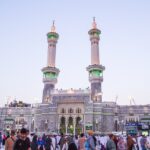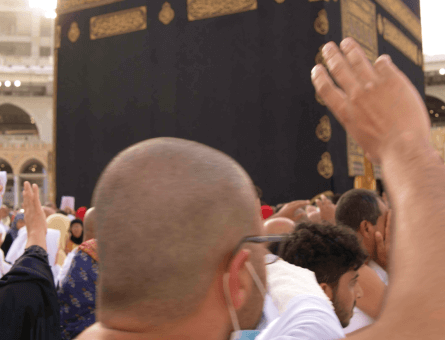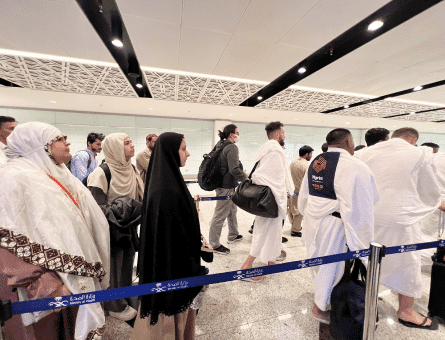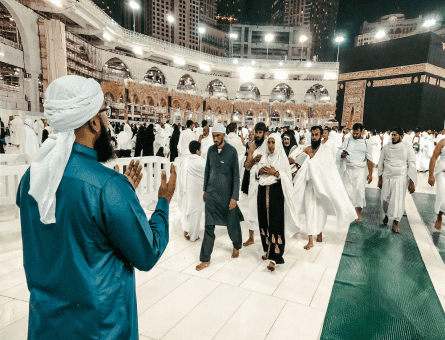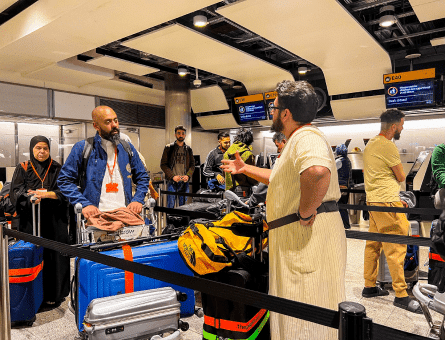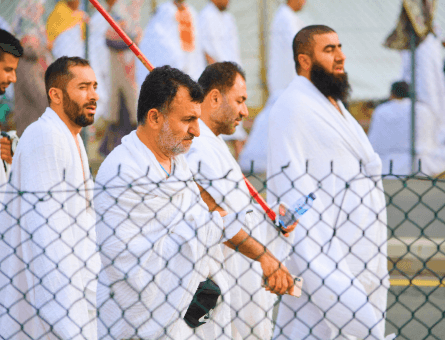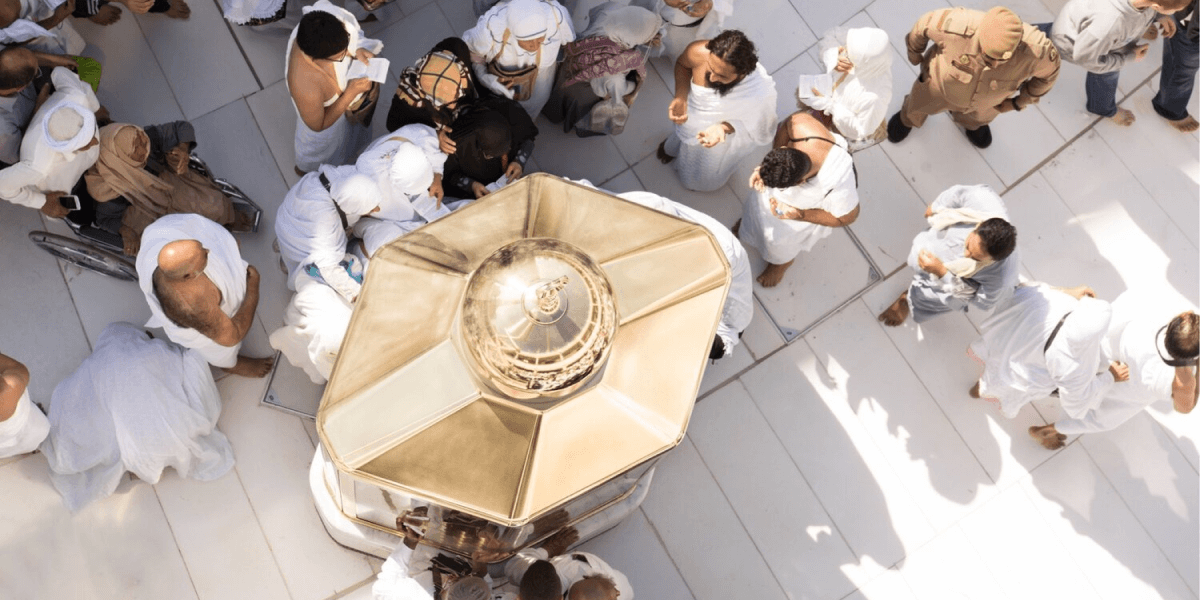Main Pillars of Hajj – Obligatory Acts of Hajj
Hajj is the fifth pillar of Islam and the dream of every Muslim man and woman to visit the Holy Kaaba and make repentance for their sins. Hajj occurs during the last month of the Islamic calendar, Dhul Hijjah, and concludes with Eid ul-Adha.
It is considered both an incredibly rewarding and spiritually cleansing act. Performing the annual pilgrimage helps deepen a Muslim’s understanding of the trials of Prophet Ibrahim (AS), his wife Hajar (AS), and Prophet Muhammad (PBUH).
Here is everything you need to know about the four main pillars of Hajj and the three obligatory acts without completion of which the annual pilgrimage will be considered void.
What Is Hajj?
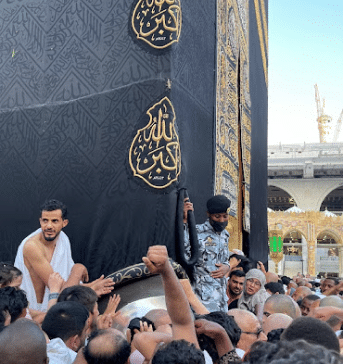
Hajj, also spelt as Haj, is the annual pilgrimage to the House of Allah SWT (Holy Kaaba) in Makkah, Saudi Arabia. The literal meaning of the word “Hajj” is ‘to intend a journey.’ Allah SWT has obligated all able Muslims to perform Hajj at least once in their lifetime.
Allah SWT in the Holy Quran says,
What Are the Pillars of Hajj?
Hajj is the fifth pillar of Islam. The significance of Hajj in Islam can be better understood by the fact that Allah SWT has asked all physically and financially stable Muslims to perform the annual pilgrimage at least once in their lifetimes.
To perform Hajj, it is mandatory to visit the Holy Kaaba in Makkah, Saudi Arabia.
Upon completion of the annual pilgrimage, one’s faith is renewed, and they are cleansed of all past sins.
The four primary pillars of Hajj are as follows:
Pillar 1 – Ihram
Ihram isn’t just two pieces of plain cloth tied together; it is a state during which one has to adhere to specific timings and strict rules and regulations.
Allah SWT in the Holy Quran states,
Getting into the state of Ihram requires a person to cleanse oneself and declare the conviction and intention to perform Hajj. The Messenger (PBUH) of Allah SWT stated, “Deeds are according to intentions, and every person will be rewarded according to his intention.”
Note that a pilgrim must assume Ihram at the miqats by performing wudu, purifying their bodies, wearing clean clothes, and making intention (niyyah), followed by reciting specific prayers in order to attain the blessings of Allah Almighty.
“Where men must wear the garment of ihram (consisting of two pieces, the izar and rida), there is no such requirement for women in ihram. Women’s dress code should be simple, modest and not reveal her ‘awrah”
Pillar 2 – Saee
Pilgrims are instructed to walk between the hills of Safa and Marwa to commemorate the struggle of Hajra (RA), the wife of Prophet Ibrahim (AS). She ran between these hills seven times to find food or water for her infant son, Prophet Ismail (AS).
Therefore, Prophet Muhammad (PBUH) has directed the Muslim Ummah to walk between as-Safa and al-Marwa in the same way as it is an integral part of the Hajj rituals.
Prophet Muhammad (PBUH) said,
Aisha (RA) reported that,
Pillar 3 – Waqfat Arafah
The time to stand and pray on the plains of Arafah begins from noon on 9th Dhul Hijjah till the dawn of 10th Dhul Hijjah. Waqfah Arafah is an indispensable part of the Hajj, so pilgrims must perform it at the prescribed place and time.
Prophet Muhammad (PBUH) said,
Prophet Muhammad (PBUH) advised the Muslims to stand and pray on Arafah, he (PBUH) said,
Urwah ibn Mudharris (RA) narrated,
Therefore, standing and praying at any place on the Arafah, even for a minute or two, is sufficient to earn the blessings of the Almighty. In case of omission of this act, Hajj would be considered invalid.
Pillar 4 – Tawaaf Al Ifadah
According to Islamic scholars, the stage of the last pillar of Hajj begins following pilgrims standing on Arafah to the end of their lives.
It is recommended that Tawaf Al Ifadah is performed as soon as pilgrims return to Makkah, although all four schools of thought have different opinions on this matter
While performing Tawaaf Al Ifadah, pilgrims circumambulate around the Holy Kaaba seven times and even try to raise hands towards Hajr e Aswad (Black Stone) to seek blessings and forgiveness.
Allah SWT in the Holy Quran said,
Tawaaf Al Ifadah is a must, and a pilgrim must not leave Makkah without performing it.
When Prophet Muhammad (PBUH) was told that Safiyyah (RA) had started menstruating, he (PBUH) said,
However, if one cannot perform Tawaaf Al Ifadah due to sickness, they must appoint someone else to perform it on their behalf or they should sacrifice an animal.
Three Obligatory Acts of Hajj
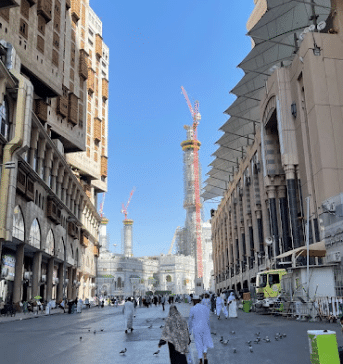
The Messenger (PBUH) of Allah SWT said, “Learn your ritual from me.”
Aside from the pillars of Hajj, there are obligatory rituals that one must perform. Although missing out on any of these rituals doesn’t invalidate one’s Hajj, Prophet Muhammad (PBUH) has instructed Muslims to offer a sacrifice (cow, one-seventh of a she-camel, or a sheep) to make up for it.
Note that in order to be accepted, the sacrifice must be made within the boundaries of Makkah and meat should be distributed amongst the poor. Ibn Abbas (RA) said,
The three mandatory rituals of Hajj are as follows:
Act 1 Assuming Ihram from the Meeqat
Prophet Muhammad (PBUH), after listing the mawaqeet of Hajj, said,
Act 2 – Stoning of the Jamarat
Allah SWT in the Holy Quran says,
In this ayah, the Almighty refers to the days of al-Tashreeq.
The Messenger (PBUH) of Allah SWT said,
Act 3 – Trimming and Shaving of the Hair
Allah SWT in the Holy Quran says,
Different Types of Hajj
There are primarily three types of Hajj:
- Hajj ul-Ifrad: The name Hajj ul-Ifrad literally means ‘the isolated Hajj.’ It is when a pilgrim performs the Hajj only and does not perform Umrah. The pilgrim who performs Hajj ul-Ifrad is called Mufrid. It is mainly performed by people living inside the boundaries of Masjid al-Haram or those living in Jeddah. Those performing Hajj ul-Ifrad wear Ihram only for the purpose of Hajj. When they enter the premises of Masjid Al-Haram, they perform the Tawaaf, followed by Saee and the stoning of the Jamarat The Mufrid then takes off the Ihram and celebrates Eid ul-Adha.
- Hajj ul-Qiran: Hajj ul-Qiran is performed by those who do not live near Masjid Al-Haram. It is also known as the ‘Accompanied Hajj.’ When wearing the Ihram to perform Hajj ul-Qiran, the pilgrim must make niyyah (intention) for both the Umrah and Hajj. Note that the pilgrim cannot leave the state of Ihram until both pilgrimages are performed.
- Hajj ul-Tamattu: Performing Hajj along with Umrah is called Hajj ul-Tamattu. The person who performs it is known as Mutamatti. The majority of people perform Hajj ul-Tamattu in which they wear Ihram before crossing the lines of Miqat. They then perform Umrah before the 8th of Dhul Hijjah as after that the pilgrim is bound to perform all the rituals of Hajj as stated by Prophet Muhammad (PBUH).
Summary – Pillars of Hajj
Even though Hajj isn’t painstakingly difficult, it isn’t that easy a journey either. Performing pilgrimage (Hajj or Umrah) requires a fair amount of struggle in order to gain forgiveness and the blessings of Allah SWT.
From getting into the state of Ihram to performing Saee, Waqaf Arafah, stoning of the Jamarat, performing halq or taqsir and Tawaaf Al Ifadah, praying in the scorching heat of Saudi Arabia is a daunting task.
Yet, every year, millions of pilgrims visit the Holy Kaaba to renew their Taqwaa (faith) and become better Muslims and human beings.
Explore The New Pilgrim App
The Ultimate App
for Hajj and Umrah!







